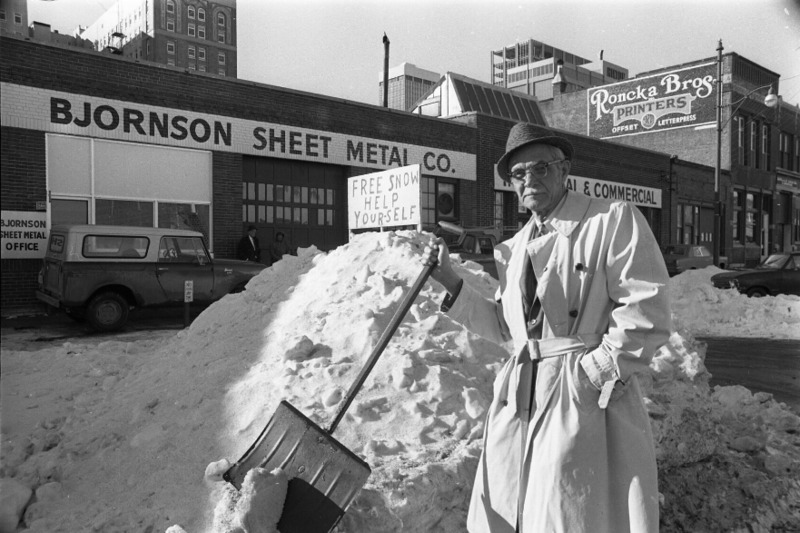Bjornson Sheet Metal Co.
Forming on May 19th of 1952, the Bjornson Sheet Metal Company sought to forge its own place within the booming Omaha sheet metal industry. Bjornson Sheet Metal Company produced stainless-steel sheet metal, a product that is especially valuable to metalworkers. Additional alloying elements in the production process gives this product a heightened ability to withstand corrosion, making it especially valuable to machinery that utilized combustion engines such as automobiles or aircraft propulsion systems. Machinery that was exposed to hazardous conditions such as rain or snow fared much better when supplemented with stainless-steel sheet metal (Staveteig, 01).
The sheet metal industry filled an especially critical role in propagating the development of Omaha, with numerous major companies purchasing and utilizing sheet metal for their own products. Union Pacific purchased sheet metal to provide additional structural integrity for railcars travelling across the United States, and automotive companies such as General Motors included sheet metal in the frames of vehicles to provide a more durable product. Sheet metal was continuously used within numerous industries within Omaha and is still used as a viable material to construct products with (Staveteig, 01).
The process of creating sheet metal does not produce lead byproducts, but much like other businesses Bjornson coated their products with lead paint. Metal products distributed by Bjornson contributed to the ability for industrial lead to reach past the industries that used these practices. Metal products coming from Bjornson entered private homes and businesses in the form of sheet metal ceilings. This is an interior design aesthetic commonly referred to as ‘tin-roofing’ that attempts to incorporate elements of Modernism through the inclusion of industry-specific building materials. Tin-roofing as an urban fad was supported as a symbol of sophistication and boasted improved abilities to mitigate fire damage (Staveteig, 01).
The residents and business owners who included tin-roofing on their private property began unknowingly exposing the community to industrial lead. The coating on Bjornson products such as tin-roofing contained lead particulates that could be inhaled as the products degraded (Connor et al, 2018). Tin-roofing was prone to degrading over time, releasing airborne lead particulates on unsuspecting members of the community. Bjornson products did not pose additional risks compared to other lead-coated products, but it does confirm the ideas proposed by Leif Fredrickson in The Age of Lead; specifically that lead-related technologies helped drive metropolitan development (Fredrickson, 2017).
The last recorded fiscal activity from Bjornson Sheet Metal Company is a failure to file and pay taxes on January 1st, 1997. This family business operated for forty five years contributing to the ability for industrial lead exposures outside of lead-based industries. There were no available records of suites being filed against the business for the products it produced or claims from product owners seeking fiscal compensation. Bjornson Sheet Metal Company has no record of being fined or penalized during the entirety of its time spent operational. There are limited records available cataloging the entire scope of Bjornson Sheet Metal Company products, and most existing records are in photographic form. The final president of the company is recorded as a Mr. Preston W Evans. More empirical data is needed to accurately define the scope of Bjornson Sheet Metal Company’s operations, and poor internal record keeping compounds issues noticed during the researching process.
